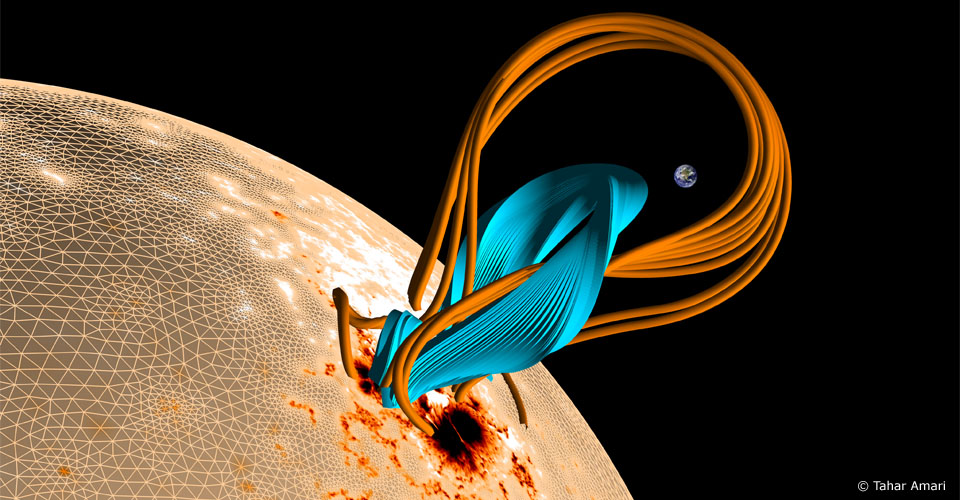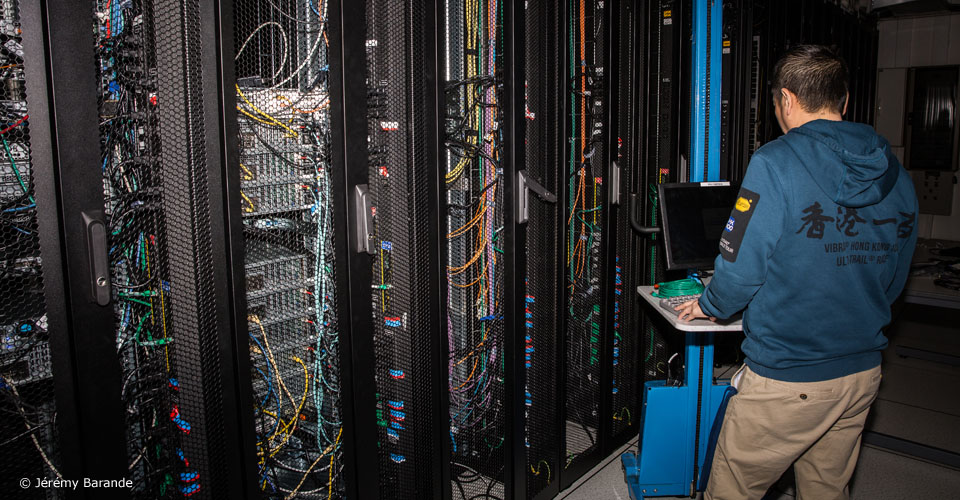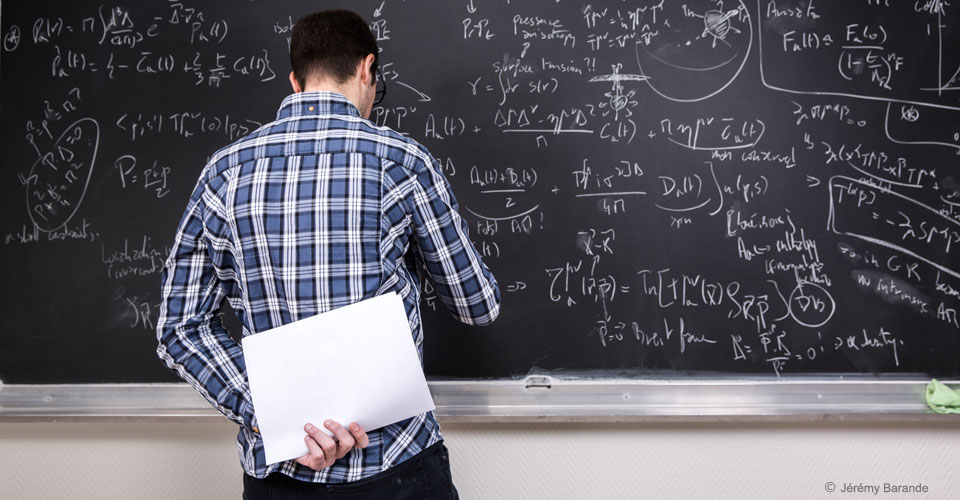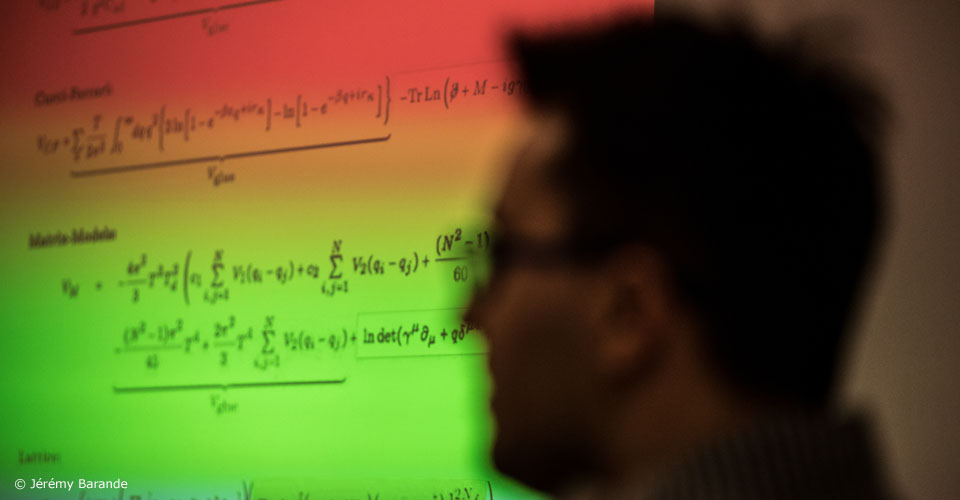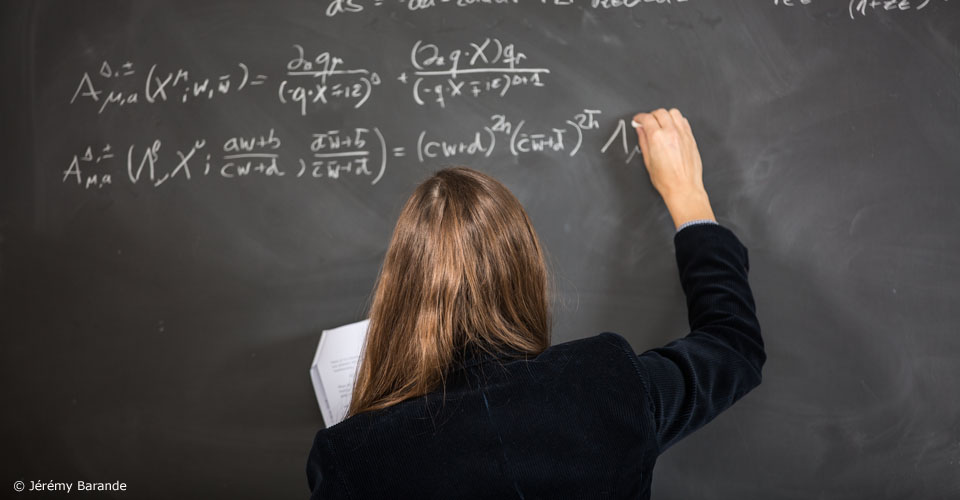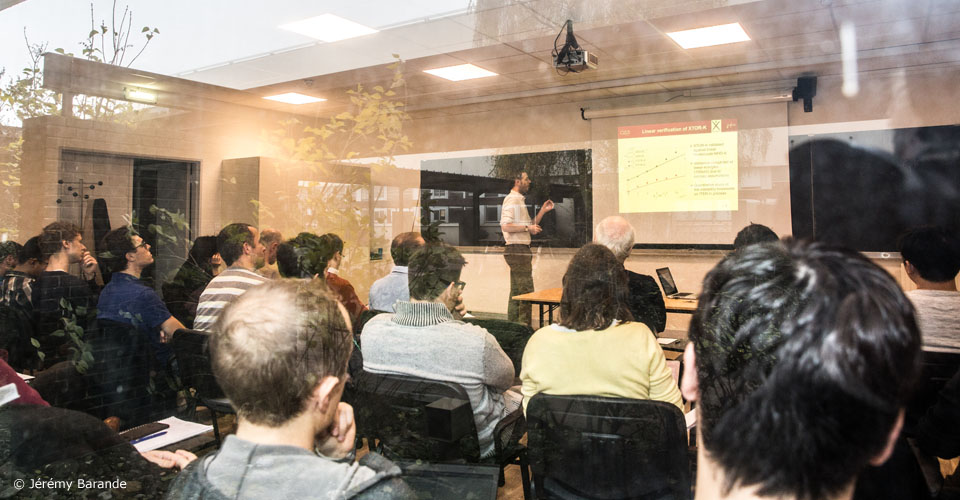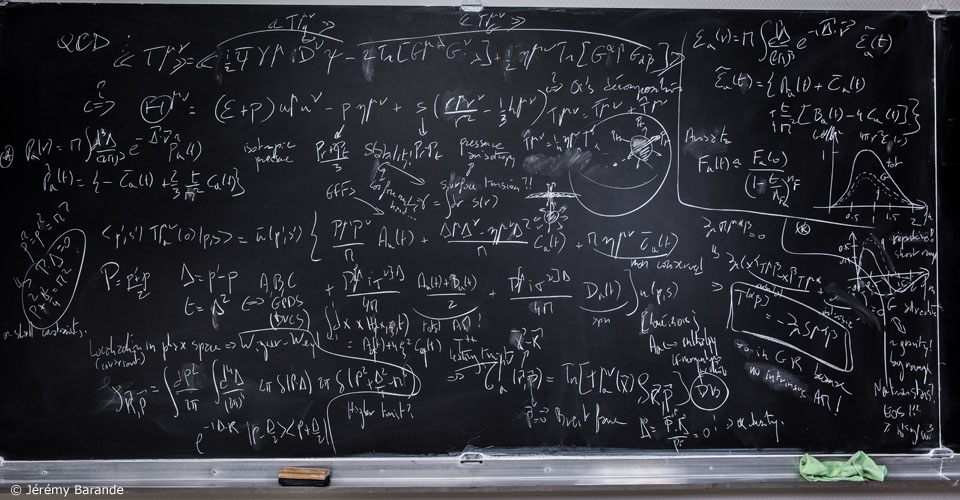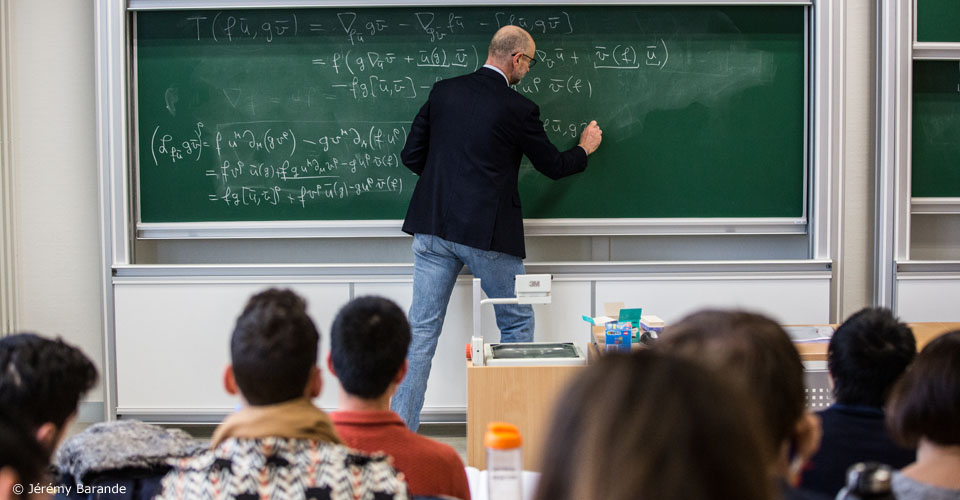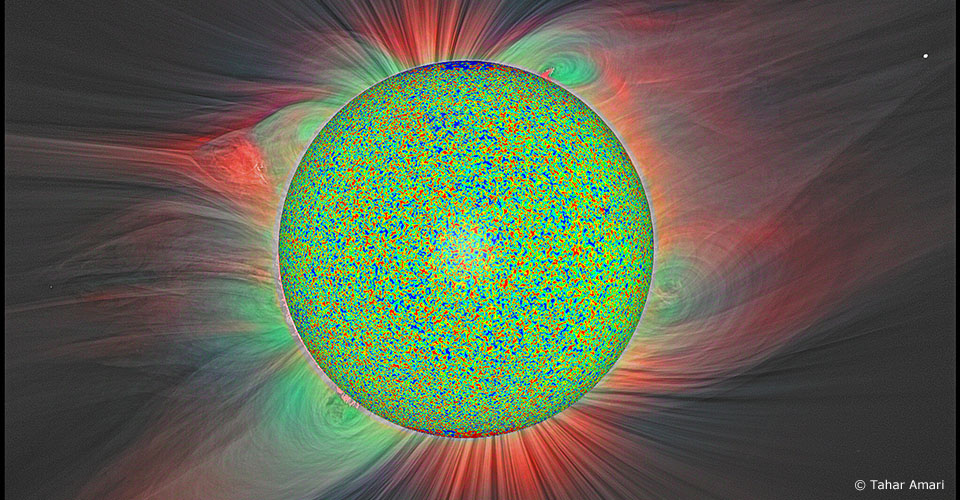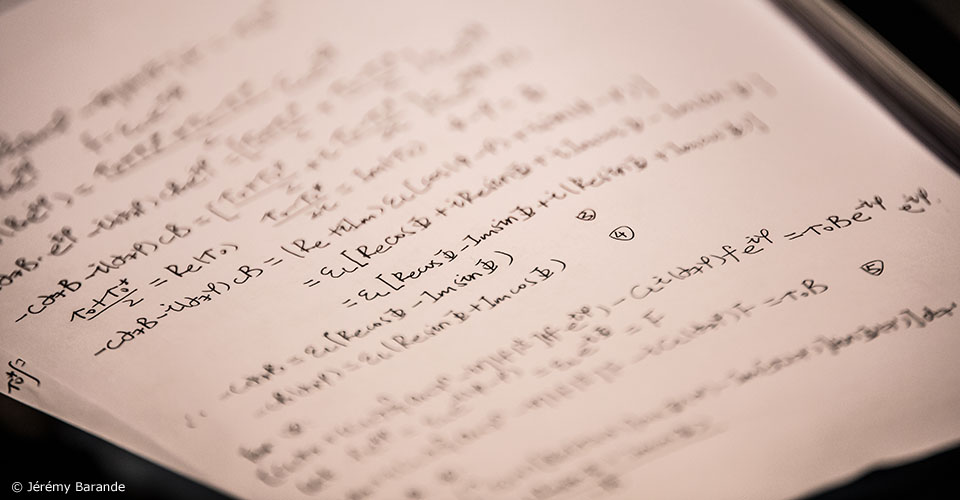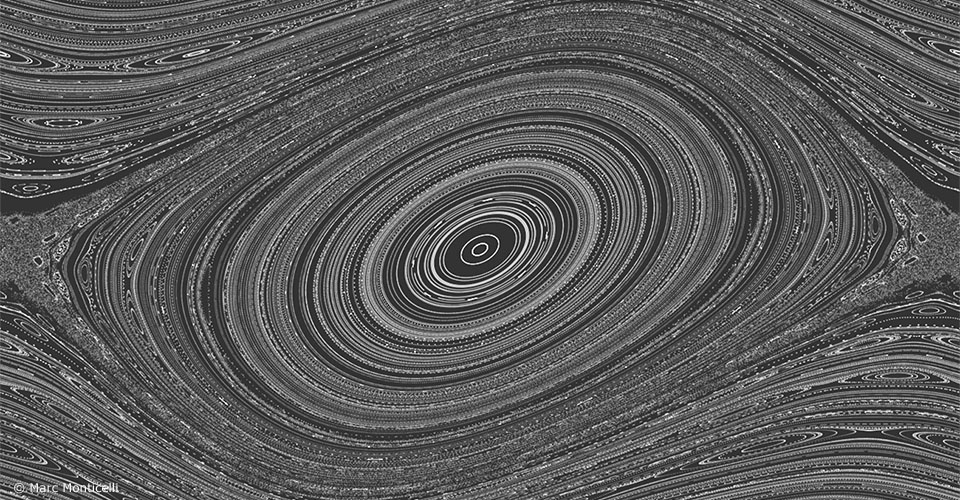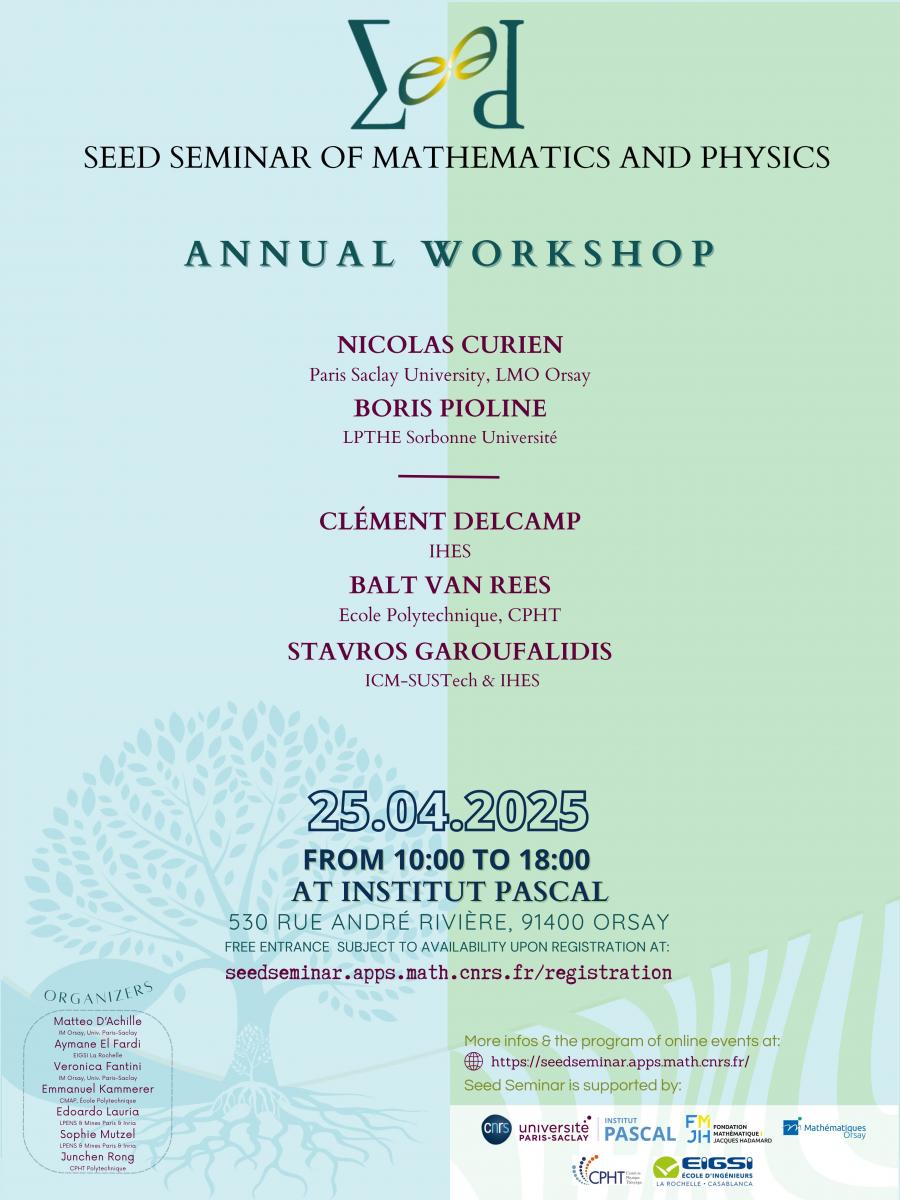séminaire conjoint LSI+CPHT+PMC = M4S
Séminaire conjoint LSI+CPHT+PMC = M4S
Mardi 22 avril à 11h00
Salle de conférence Louis Michel (CPHT)
Programming twist angle and strain gradients in two-dimensional materials by bending
Maëlle Kapfer
(Post-doc C2N)
The possibility to isolate atom-thick layer of material from a bulk crystal allows the design of structures with a wide range of properties [1]. In particular, by twisting those single layer sheets, a periodic potential, called moiré potential, is superimposed over the lattice modifying the properties of the parent material [2], [3]. Twisted two-dimensional materials have generated tremendous excitement as a platform for achieving quantum properties on demand. However, the moiré pattern is highly sensitive to the interlayer atomic registry, and current assembly techniques suffer from imprecise control of the average twist angle, spatial inhomogeneity in the local twist angle, and distortions due to random strain [4]. Here, we demonstrate a new way to manipulate the moiré patterns in hetero- and homo-bilayers through in-plane bending of monolayer ribbons, using the tip of an atomic force microscope [5]. This technique achieves continuous variation of twist angles with improved twist-angle homogeneity and reduced random strain, resulting in moiré patterns with highly tunable wavelength and ultra-low disorder. Our results pave the way for detailed studies of ultra-low disorder moiré systems and the realization of precise strain-engineered devices.
[1] K. S. Novoselov et al., Science, 353, aac9439 (2016)
[2] Y. Cao et al., Nature, 556, 43–50 (2018)
[3] M. Yankowitz et al., Science, 363, 1059–1064, (2019)
[4] C. N. Lau et al., Nature, 602, 41–50, (2022)
[5] M. Kapfer et al., Science, 381,. 677–681, (2023)

